
Developed from the Bofors 40 mm/60 Model 1936, the 40 mm/70 Model 1948 was originally designed to replace the older weapon's twin mountings with single mounts by having double the rate of fire (ROF) of the older weapon. Newer, faster-firing versions of this weapon are still in production by Breda as well as by Bofors (now BAE). All of these 40 mm/70 guns use gravity feed magazines whose designs are directly descended from those for the 40 mm/60 Model 1936. Unlike the earlier weapon, all Bofors 40 mm/70 guns are air-cooled, there are no water-cooled versions.
The original Model 1948 (Officially, 40 mm Luftvärnsautomatkanon M/48) was a land gun while the SAK-40/L70 series used the same gun but with mountings designed for naval applications. The Model 1958 was a modernized SAK mounting first used by the Bundesmarine (Federal Republic of Germany) on former USS Fletcher class (DD-445) destroyers supplied under the US military assistance program. Used in both single and twin mountings.
Although an impressive AA gun in the late 1940 to 1960 time frame, the value of such MG AA weapons has decreased since World War II with the increasing sophistication of stand-off anti-ship weapons such as the USA's Harpoon. For that reason, Bofors has developed more sophisticated ammunition such as the 3P round which can be set for point contact or proximity detonation. These improvements, together with a better FCS, allow these weapons to be used against sub-sonic cruise missiles although they are more often intended to be used against small surface craft.
In the late 1980s Bofors upgraded the design to the 40/70-SAK-600 (Trinity) standard which has a faster rate of fire and improved reliability. In August 1986 Germany awarded a contract to Bofors to upgrade their guns to the 40/70-SAK-600 standard and these weapons were still in use as of 2006 on Schnellboots and Minecraft.
The Mark 3 can be integrated with any analog or digital fire control system. This mounting is normally unmanned and controlled from the combat information center but can be locally controlled from an on-mount operator's console for aiming and will remain fully stabilized by the gun's local gyros. In case of total power supply failure, the gun can be layed and fired manually. A radar on the gun barrel is used for correcting the FCS solution.
The Mark 4 is an improved version of the Mark 3 and has replaced the hydraulic drives of earlier designs with all electric motors which reduces the flammability of the mounting and improves reliability. Neither of these mountings have any deck penetration except for electrical connections.
The Italian armaments firm of Breda (later OTOBREDA, then OTO Melara) has produced their own versions of the 40 mm/70 under license since 1969. The company has specialized in automatic loading mechanisms which are also used for their own designs, as can be seen on the 40 mm/70 OTOBreda datapage.
Bofors was purchased by United Defense which was in turn bought by BAE Systems.
| Designation 1 | 40/L70 (1.57") Model 1948
SAK-40/L70-315 SAK-40/L70-350 SAK-40/L70-520 40/L70 Model 1958 40/L70-SAK-600 (Sea Trinity) 40/L70 Mark 3 40/L70 Mark 4 |
|---|---|
| Ship Class Used On | SAK: Tre Kronor and other Swedish Warships
Model 1958: German warships since the 1960s Sea Trinity: N/A Mark 3: N/A Mark 4: United Kingdom: Type 31 Frigate |
| Date Of Design | 1948 |
| Date In Service | SAK: 1952
Others: N/A |
| Gun Weight | Complete Gun: 1,920 lbs. (2,870 kg)
Barrel: 386 lbs. (175 kg) |
| Gun Length | N/A |
| Bore Length | 110.2 in (2.800 m) not including flash hider
122.0 in (3.100 m) including flash hider |
| Rifling Length | N/A |
| Grooves | 16 |
| Lands | N/A |
| Twist | Increasing RH 1 in 46 to 1 in 27 |
| Chamber Volume | N/A |
| Rate Of Fire 2 | SAK and Model 1958 3: 240 rounds per minute.
Sea Trinity: 300 rounds per minute Mark 3: 330 rounds per minute Mark 4: 300 rounds per minute |
- ^In this table, SAK data applies to SAK-40/L70-315, SAK-40/L70-350 and SAK-40/L70-520 naval guns and can be used for the land Model 1948.
- ^The major difference from the 40 mm/60 Model 1936 to increase the rate of fire was to change how ejected casings are handled. In the 40 mm/70 the loading tray was redesigned so as to tilt up after each round is chambered. When the gun fires, the spent casing is ejected and as soon as it clears the breech ring it strikes the bottom of the tray, deflecting the casing downwards. The rammer then moves forward, pushing the tray down and pushes the next round, in position on top of the tray, into the breech. This change more than doubled the rate of fire compared to the older gun.
- ^These mountings all use an 18-round autoloader which is fed by the standard four-round clips.
| Type | Fixed |
|---|---|
| Weight of Complete Round | PFHE: 5.4 lbs. (2.5 kg)
HE-T: 5.3 lbs. (2.4 kg) 40 3P: 5.5 lbs. (2.5 kg) |
| Length of Complete Round | 21.0 in (53.34 cm) |
| Projectile Types and Weights | PFHE 1a: 1.94 lbs. (0.88 kg)
HE-T 2a: 2.12 lbs. (0.96 kg) 40 3P 3a: 2.15 lbs. (0.975 kg) |
| Bursting Charge | PFHE: N/A
HE-T: 0.254 lbs. (0.115 kg) 40 3P: >3,000 fragments propelled by PBX |
| Projectile Length | 8.3 in (21 cm) |
| Complete Round Length | 21.4 in (53.44 cm) |
| Propellant Charge | 1.07 lbs. (0.485 kg) |
| Cartridge | 40 mm x 365R 4a |
| Muzzle Velocity | HE-T: 3,297 fps (1,005 mps)
PFHE: 3,363 fps (1,025 mps 40 3P from L/70: 3,320 fps (1,012 mps) 40 3P from Trinity: 3,610 fps (1,100 mps) |
| Working Pressure | 21.8 tons/in2 (3,250 kg/cm2) |
| Approximate Barrel Life | Mark 3 and Mark 4 - up to 5,000 rounds |
| Ammunition stowage per gun | SAK 40/70-315, 350 and 520: Autoloader holds 18 rounds, 96 rounds on mount
Sea Trinity: 99 rounds per magazine Mark 3: 101 rounds per magazine 5a Mark 4: 30 rounds on gun plus 70 rounds in a ready-use magazine 6a |
- ^Proximity fuzing is greater than 33 feet (10 m) for aircraft, 16 feet (5 m) for missiles and 10 feet (3 m) for sea skimmer targets.
- ^Tracer burns for about 4 seconds.
- ^Bofors 40 mm 3P ammunition fuze options allow three different proximity modes as well as settings for time, impact and armor piercing requirements.
- ^By comparison, the Bofors 40 mm/56 cartridge was 40 mm x 311R.
- ^The Mark 3 uses a dual compartment 101-round magazine. The magazine can be rapidly switched to provide options between the latest Bofors 6 mode programmable 3P rounds and other 40 mm L/70 ammunition types.
- ^The Mark 4 has a 30-round magazine on the gun which is automatically replenished by a 70-round intermediate magazine.
| Elevation | Distance |
|---|---|
| Maximum Horizontal Range | 13,120 yards (12,000 m) |
| Max Effective AA Range | 13,120 feet (4,000 m) |
| Mode | Distance |
|---|---|
| Effective AA range | 3,280 yards (3,000 m) against low flying aircraft |
| Effective CIWS range | 2,740 yards (2,500 m) against a sea skimming missile |
| Mode | Distance |
|---|---|
| Maximum | 13,670 yards (12,500 m) |
| Effective range against surface targets | 9,140 yards (10,000 m) |
| Effective CIWS range | 2,740 yards (2,500 m) against a sea skimming missile |
| Designation | Single Mountings
SAK-40/L70-315 1b 2b |
|---|---|
| Weight 9b | SAK-40/L70-315: 6,330 lbs. (2,870 kg)
SAK-40/L70-350: about 6,830 lbs. (3,100 kg) SAK-40/L70-520: 7,610 lbs. (3,450 kg) Sea Trinity: 8,160 lbs. (3,700 kg) Mark 3: Above deck (excluding ammunition): 7,700 lbs. (3,500 kg) Below deck: 770 lbs. (350 kg) Mark 4 (excluding ammunition): 5,500 lbs. (2,500 kg) |
| Elevation | SAK-40/L70-315: -10 / +90 degrees
SAK-40/L70-350: -10 / +90 degrees SAK-40/L70-520: -10 / +90 degrees Sea Trinity: -20 / +80 degrees Mark 3 and Mark 4: -20 / +80 degrees |
| Rate of elevation | SAK-40/L70-315: Manually operated, only
SAK-40/L70-350: 45 degrees per second (acceleration 35 degrees per second) SAK-40/L70-520: 45 degrees per second (acceleration 35 degrees per second) Sea Trinity: 45 degrees per second Mark 3: 57 degrees per second Mark 4: N/A |
| Train | 360 degrees continuous (slip rings) |
| Rate of Train | SAK-40/L70-315: Manually operated, only
SAK-40/L70-350: 85 degrees per second (acceleration 127 degrees per second) SAK-40/L70-520: 85 degrees per second (acceleration 127 degrees per second) Sea Trinity: 85 degrees per second Mark 3: 92 degrees per second Mark 4: N/A |
| Gun Recoil | Model 1948, SAK-315, 350, 520 and Model 1958: 9.0 to 9.8 in (23 to 25 cm)
Others: N/A |
- ^The 315 had all manual controls to keep costs and weight to the minimum possible. Intended to be used on small patrol boats where AA fire was not a priority.
- ^The 350 used electro-hydraulic power drives that were intended to be coupled to a remote fire control system. Incorporated gyro systems to allow full stabilization.
- ^The 520 is similar to the 350 but with the addition of an Automatic Feed Device (AFD) which increased the overall weight but reduced manning down to a single crewman.
- ^Bofors 40 mm Sea Trinity was conceived as a lightweight CIWS with low magnetic signature and enclosed in a manned or unmanned stealthy gunshield. Trinity Spartan uses an off-mount fire control while Trinity normally has an on-board FCS with several options including the Goalkeeper FCS or the Ericsson Eagle radar.
- ^The Mark 3 is a Stealthy mounting based on the Sea Trinity.
- ^The Mark 3 operates from 440 Vac 60 Hz three phase power.
- ^Mark 4 includes a video camera on the gun barrel as well as a radar antenna.
- ^The cupola style weather shield for the SAK series adds (150 kg) to the values in this table.
- The British Royal Navy developed plans for single, twin and sextuple versions (Marks 10, 11 and 12) of the 40 mm/L70 gun during the 1950s but ran into problems during the development phase. As noted above, these guns fed from an 18-round autoloader which was in turn hand-loaded via the standard four-round clips. This meant that the gun design was based upon firing a short burst at a high ROF (equivalent to one clip every second, which was too fast for the loader crewman to keep the gun supplied with fresh clips) and then a pause while the gun was reloaded. This pause allowed the air-cooled gun to cool down a bit between bursts. The British wanted more continuous fire - a necessity for naval applications - so they designed an auto-feeder that could move a clip from ammunition boxes across to the autoloader every 0.124 seconds. What they found was that these air-cooled guns could not stand up to continuous fire and the program was cancelled in 1957 in favor of Sea Cat.
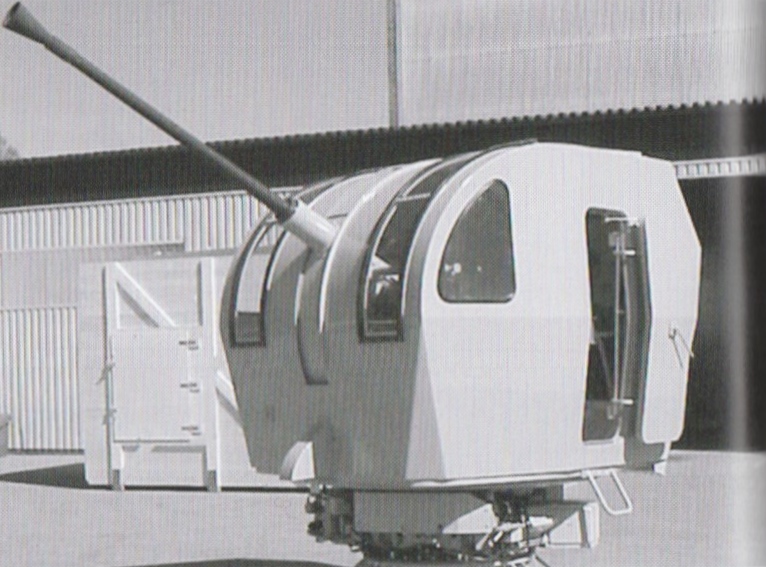
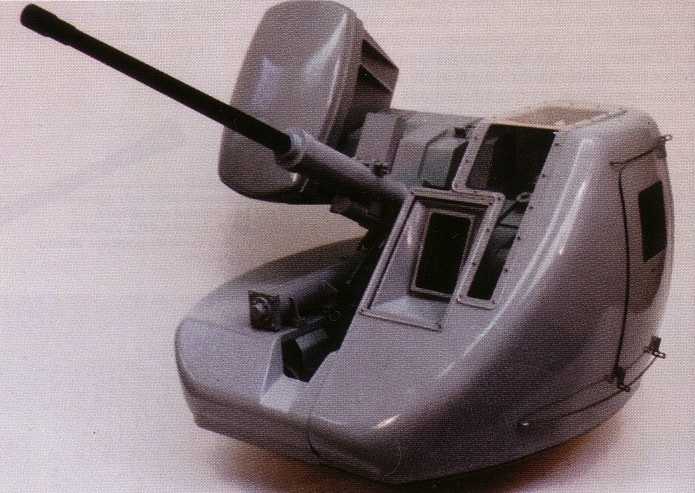
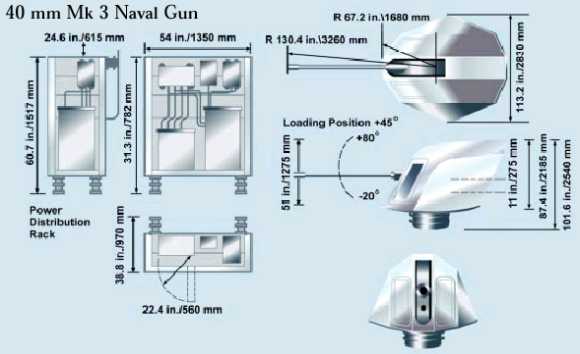

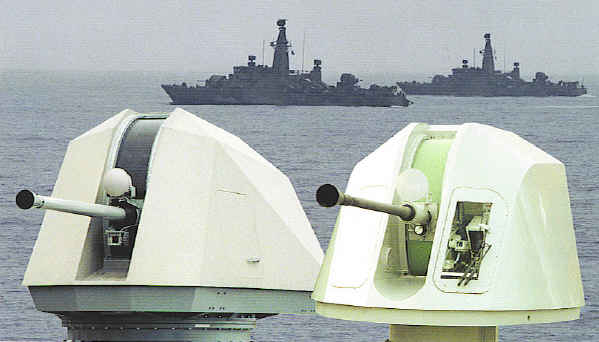

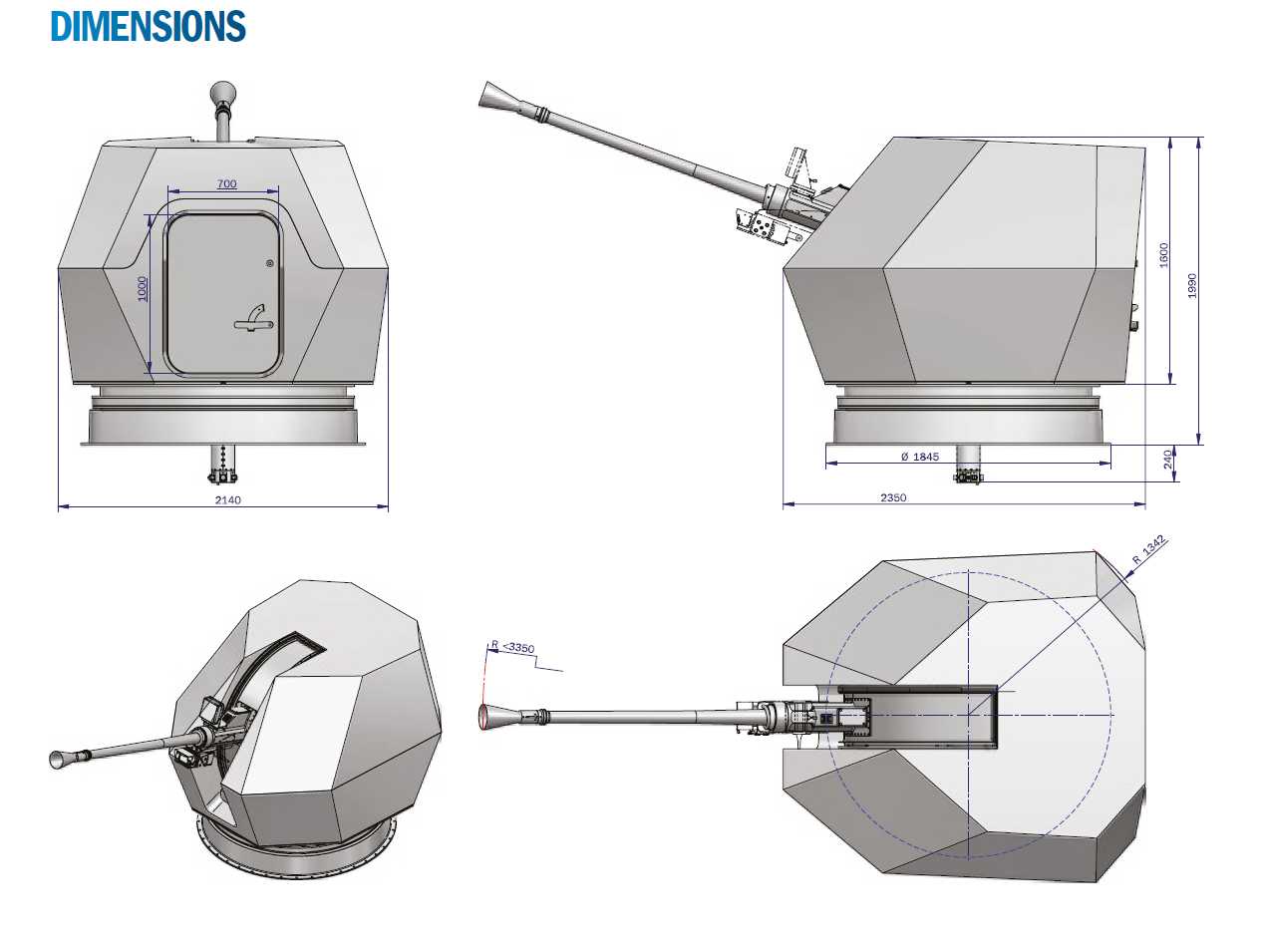
"The Naval Institute Guide to World Naval Weapon Systems 1991/92" and "Naval Anti-Aircraft Guns and Gunnery" both by Norman Friedman
"The Bofors Gun" by Terry J. Gander
"Jane's Ammunition Handbook: Ninth Edition 2000-2001" edited by Terry J. Gander and Charles Q. Cutshaw
"Rapid Fire" by Anthony G. Williams
---
Manufacturers' media:
"Bofors 40 mm Mk4 Naval Gun System Datasheet" produced by BAE Systems
BAE Systems video presentation on the Mark 4
BAE Systems Press Releases
Bofors Defence Press Releases
United Defense Press Releases
---
Special help from Matthew Rodchenko, Joakim Wohlfeil, Mark Fitzpatrick, Leo Fischer and Hans Migielski of Fregatten Köln
20 December 2007 - Benchmark
31 October 2011 - Added information about Mark 4
10 January 2016 - Added note regarding rate of fire
27 February 2018 - Converted to HTML 5 format, added details on naval mountings, reorganized notes
and added photographs of SAK mountings.
17 August 2020 - Added note regarding British plans
15 May 2022 - Added use on UK Type 31 Frigate
